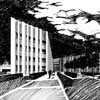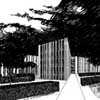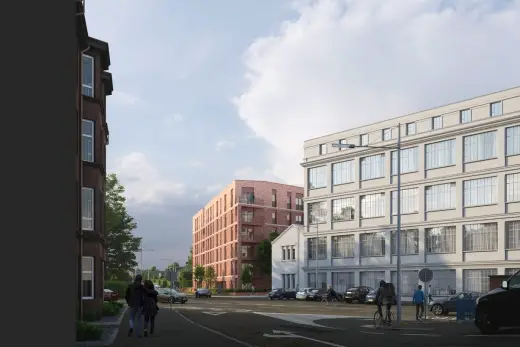Serious Crime Campus Image, Lanarkshire Development News, Scottish Government Facility Design Team
Serious Crime Campus Gartcosh
Scottish Government Building in Lanarkshire, Strathclyde, Scotland design by Ryder Architecture
2 May 2014
Design: Ryder Architecture
Ryder designs state-of-the-art Crime Campus for Scottish Government
Serious Crime Campus Building
Combatting serious organised crime and tackling organised crime groups is a key part of the Scottish Government objective to achieve a Safer and Stronger Scotland and is one of the Cabinet Secretary for Justice’s top three priorities. Part of this strategy is to deliver a secure crime campus for the Specialist Crime Division of Police Scotland and their partner agencies, enabling closer and more joined up working in the fight against Serious Organised Crime.
These agencies include parts of the Crown Office and Procurator Fiscal Service, the National Crime Agency and HM Revenue and Customs. The site will also provide a new forensic science laboratory for the Scottish Police Authority Forensic Services. The campus will provide accommodation for over 1100 people, including room for growth.
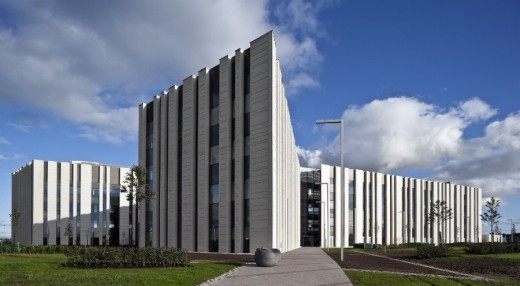
The Scottish Crime Campus is a unique £75m Scottish Government-funded, state-of-the-art facility providing 12,600 sqm net of high quality office accommodation, forensic laboratories and support facilities over four storeys with an additional level of plant.
Delivered on time and on budget, the campus is a bespoke building that will be shared by a range of partners involved in combating serious crime and keeping Scotland safe. For the first time, law enforcement agencies working to both devolved and UK legislation will operate under the same roof in a purpose-built facility.
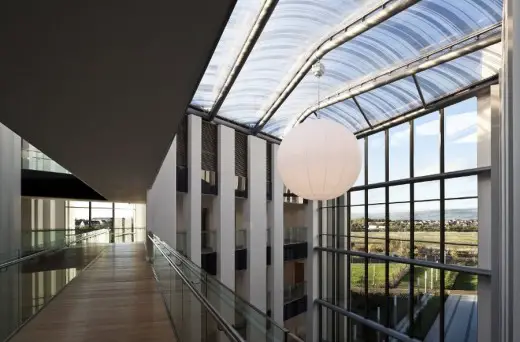
The aims of the project are:
Improve the efficiency and effectiveness of the partners in combatting crime
Improve efficiency and foster pro-active co-operation and collaboration between agencies
Provide world class forensic scientific support to local and national partners
Provide an adaptable and flexible facility, to meet existing business needs and take account of likely future needs, and covert and forensic technological advances
In accordance with best procurement practice, planning requirements and Scottish building standards
Deliver a building which has been built in sympathy with the environment and will achieve at least 10% (in cost terms) recycled content and that will achieve a minimum British Research Establishment Environmental Assessment Method (BREEAM) rating of ‘Very Good’.
The function of the building defines its architecture; the design creates a practical yet iconic building that will encourage partners to work together collaboratively and creatively. Adopting a geometry informed by the immediate context, programme and chromosome form, the design of the building references genetic structures and imagery associated with identity; it emphasises uniqueness and, at the same time, common bonds.
The campus is situated at Gartcosh Business Interchange, a key regeneration area under development on the site of the historic strip mill and steel works. To date Scottish Enterprise has invested more than £20m in the site in terms of land reclamation, transport links and other development. The Gartcosh Business Interchange will provide over 170,000 sqm of business space serviced by excellent transport links.
Milestones and Completion
Work on this unique project started early in 2009 and the shell and core was completed in summer 2012. The building will be fully operational by early 2014.
Serious Crime Campus Gartcosh Building in Lanarkshire
Description of project
The building is located at the centre of the site with parking to the south. The campus comprises four connected elements which form a U-shape around a central atrium space running on a north-south axis. Compact floor plans minimise external wall area to reduce heat loss through the façade and high floor to ceiling height encourages natural daylight penetration from the outside and atrium.
All agencies share the atrium space – it is the social core of the building, the place where employees meet, interact and circulate. This interaction will also encourage the dissemination of ideas and help create a sense of community.
The atrium space can be used for large gatherings, multiple breakout and informal meetings, as well as allowing overflow space from the canteen if desired. It is aligned to offer the best open views of the Campsie Hills to the North. The atrium is used to foster a clear inside outside connection, with glazing taken down to the lower floor of the space opening up the view, and helping to prevent the building from feeling too insular. This is further enhanced by the use of similar materials either side of the atrium glazing.
The floor of the atrium is stepped up over accommodation and shared between ground, first and second floors which creates a greater degree of privacy and quietness through each shared space.
Façade
Numerous visits to the site and to comparable institutions in the UK and Europe provided reference points for the development of a design strategy, with the solution following many discussions with all the client bodies. Context, precedent and metaphor were combined with these analyses to develop a semiology which would be capable of being read at various levels and provide users with a way to understand the nature of the building.
The idea was developed for a series of buildings, whose ground plan was based on the legs of a chromosome, arranged around a common space sitting above the exposed geology of the site, which formed a base internally embodying and enclosing secure spaces. Rootedness, Security, Stability, Confidence, Intelligence, Vision, Meaning, Legibility, Quality were all essential characteristics of the brief which required to be embodied in the building’s design solution.
The dynamic nature of the plan evolved from the geometry of the site boundaries, such that the principal entrance would be on a diagonal route, parallel to the railway, as is the secondary entrance to the east allowing connection to future expansion wings. A strong design ethos was established based on technologies used in crime detection, with DNA and chromosome biology being selected as main themes. The primary circulation is at the centre of the building, at the point where the two chromatid shapes would touch.
Connecting bridge elements through the atrium were also initially inspired by DNA chain connections. These concepts were the starting point for iterative processes whereby design options were tested in terms of accessibility, legibility, internal ambiance, environmental performance and structural expression which ultimately permitted a solution with some depth and purpose. Solutions and spatial permutations developed alongside the detailed three-dimensional design, whose complexities were tested through model-making, animations and other forms of visualisation. Façade engineering, manipulating light and shadow, enabled simultaneous modulation of both the inside environment and outside of the building as well as embodying content and meaning.
Many of the functions carried out within the building are concerned with identity and identification. The façade and building concept take some of the visual references associated with the process of identification and abstracts them to give the building itself, as well as the working environment, a clearly recognisable identity. Vertical orientation of the façade breaks up the horizontal massing, providing rhythm and variety, and is inspired by various visual references, including DNA sequence art, barcode band artworks and fingerprint dermal ridges.
These visual references generate a theme which is repeated through the landscape design, façades and finishes within the atrium and throughout the building. These ideas generate the form of the building. The discrete functions in each wing of the building are set against one another as blocks in the personification of the chromosome form. The distinct role of each wing is in contrast to the collective shared space of the atrium which it embraces as the agora or meeting place – where ideas are shared. The building is also rooted in the specific geology of the site in North Lanarkshire and this geological form rises from the earth into the atrium as the base of the building – a series of stepped plinths, in turn enclosing support accommodation.
A limited palette of standardised bands of deep solid masonry are repeated in sequences around the façade in arrangements which reference the male and female chromosome sequences. These waves are more dense at closed elements of the façade and provide contrast at large glazing areas.
Deep window reveals generate a columnar or pilastered effect on the façades, providing considerably more shading than a flat façade. This both minimises solar gain and provides relief to the otherwise regular and long façades. This verticality and the deeply modelled façades also strongly ground the building with a gravitas suited to its functions.
Sustainability at the Serious Crime Campus Gartcosh
Overview
The Scottish Crime Campus design has achieved an exemplary B+ Scottish EPC rating. The specification of the building’s fabric and services allows the CO2associated with the running of the building to be reduced by 40% compared to a normal Building Regulations compliant development.
The plan is aligned with the eastern site boundary on a generally north-south axis to present a short elevation to the south thus mitigating the impact of direct solar gain to the office spaces.
The involvement of the facilities management team during the design process will ensure appropriate management of the building and its technologies.
The project is on course to achieve a BREEAM Very Good rating to demonstrate overall sustainability.
Infrastructure
The project includes a 900kW Ground Source Heat Pump (GSHP) installation which we believe to be one of the largest in Scotland. The system will extract carbon free thermal energy from heat exchangers buried up to 140m deep. The energy which is captured throughout the year is then upgraded and converted to cooling or heating to meet the building’s demands. This is done via electrically driven heat pumps. The GSHP system reduces the operational carbon associated with the building air conditioning by 650 tonnes every year.
Lifts have been specified that include a stand-by mode, variable voltage, variable frequency control drives and energy efficient car lighting to reduce the consumption of electricity.
Energy is wasted as it passes through electrical transmission and distribution systems. To reduce this wastage the project makes use of an 11kV distribution system. At local load centres the voltage is reduced to low voltage (400V/230V) by means of low loss transformers, saving up to 3% of electrical energy.
Historically in the UK the electrical infrastructure was designed for 240V whereas in Europe it was 220-230V. As equipment is designed to operate across Europe, then exceeding the voltage wastes energy without improving performance. The low voltage level out of the transformers can be optimised using tappings on the transformer to bring it down to the 220-230V range.
Building Systems
A full Lighting Control System (LCS) automatically adjusts illumination levels in line with the amount of sensed daylight. The LCS also provides automatic time channel control and presence/absence detection.
Sub metering of substantial energy uses, high energy load installations and tenancy area allow monitoring of the building’s energy consumption.
30m2 of solar thermal panels are provided to meet the annual domestic hot water needs, reducing demand on the boilers.
The annual water consumption is significantly reduced as a result of low flow sanitary fixtures. This is also supplemented by rainwater harvesting, where reclaimed rainwater will be used to flush over 50% of the WCs within the facility.
Sanitary supply shut off is provided by a solenoid valve attached to a presence detector. This closes the valve when nobody is in the toilet, thereby preventing water losses due to leaks.
Heat recovery systems in the air handling units exchange hot ‘stale’ air with fresh incoming air, warming the fresh air as it passes through the system, reducing the heating load.
Landscaping
The building is surrounded by a new high quality landscape to offer the best possible views from the office environments. The landscaping uses the language generated in the façade and takes this as a reference for creating varied bands of different surfaces, swales, mounds and planting.This breaks up the austere flat nature of the site into strips of differing heights which will change in appearance, level of openness and privacy from different angles. This will also improve the exposed nature of the site by creating shelter. The substation and railway will be screened from outside view using dense planting. Car parking is kept away from the primary visual aspects from within the building and is itself broken up by planting.
Alignment
Picking up the metaphor of the chromosome and DNA helix and recognising the distinct functions within each wing, the geometry of the site is reflected in the building via its alignment. To the north and south façades of the building are aligned with their respective boundaries whilst the western wing is redirected to create an open appearance to the atrium capturing north light whilst aligning with the main diagional pathway into the building reinforcing its importance as the main entrance.
Scottish Government Building in Lanarkshire – Engineering
Engineering
The decision to go to a concrete frame was evolved through Stage C and D and was based on an option study that was carried out for both the laboratories and the offices.
The options study included steel frames and concrete frames (RC and post-tensioned).
For the laboratories, which are designed for a vibration Response Factor of 2, this showed that the flat slab solution was the cheapest option. It is also a standard solution for laboratories given that these are intensively serviced and the flat slab inherently mitigates any vibration issues that may occur with lighter forms of construction.
For the offices, the flat slab, on a straight comparison, was slightly more expensive than a standard composite slab steel frame with downstand beams. However the flat slab gave other advantages over the steel frame which were not identified in the broad frame costs.
As the structural zone is reduced with the flat slab frame the overall height of the building reduces and façade costs reduce.
Services distribution is more flexible with the flat soffit.
Fire protection is inherent within the concrete frame.
Fitting of partitions is much simpler with a flat soffit than with downstand beams.
The flat slab was the most economical solution for the laboratories and for all the reasons above the view of the Design Team was that a flat slab frame was also the most appropriate frame for the offices.
In summary the concrete flat slab frame was chosen because:-
Economic structural frame
Reduced the overall height of the building and façade costs
Met vibration response criteria
Excellent services distribution in an intensively serviced building
Excellent durability and longevity
Excellent fire resistance properties
Simple fitting of partitions and services to flat soffit
Met security requirements
Summary
The Scottish Crime Campus is an innovative building which uses design excellence to deliver a unique facility which will assist in tackling serious organised crime. The building facilitates the ideas of collaboration, exchange and dissemination of information allowing cooperation between partner organisations.
Project Team
Client: Scottish Government
Client Advisor: Jeremy Smart Associates
Lead Consultant + Fit-out Architect: BMJ Architects
Design Champion + Shell and Core Architect: Ryder Architecture
Project Manager: Sweett Group
Cost Consultants: Thomas & Adamson
Services Engineer: Wallace Whittle: TUV
Structural Engineers: Arup
Landscape Architects: Ian White Associates
Principal Contractors: C1-Sir Robert McAlpine: C2-Graham Construction: C3 -Balfour Beatty
Photography: Keith Hunter. Copyright of the Scottish Government
Serious Crime Campus information from Ryder Architecture
Serious Crime Campus
Scottish Government building – design by bmj architects & gm+ad architects
15 + 2 May 2012
Work has completed on the core and shell of the £82 m Scottish Crime Campus, Gartcosh, completed by BMJ Architects / Gordon Murray Ryder. The Gross Floor Area is 22,500 sqm. The designs were produced by a collaborative partnership of BMJ Architects and gm+ad architects.
Following fit out of the interior of the building, the Scottish Crime Campus is due to provide accommodation for up to 1200 people and is expected to be fully operational by autumn 2013. The campus is due to be completed in mid-2013.
“The Crime Campus brings together the Scottish Crime and Drug Enforcement Agency, Serious Organised Crime Agency, Her Majesty’s Revenue and Customs, Scottish Police Services Authority Forensic Services and Crown Office Procurator Fiscal Service into a single campus.
In order to promote collaboration and innovation across services we worked with all agencies to ensure that the Crime Campus meets the current and future operational requirements and encourages shared working.
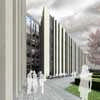
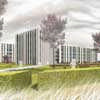
Serious Crime Campus Gartcosh pictures from BMJ Architects
The main building is a four storey structure arranged around a central atrium with transepts. Whilst primarily an office development the building also provides forensic laboratories and support facilities.
Adopting a geometry informed by the immediate landscape and chromosome form the design references genetic structures and imagery associated with identity.
The Crime Campus is expected to be fully operational by mid 2013 and will provide accommodation for over 1100 people”
15 Apr 2008
Serious Crime Campus Gartcosh Construction
Work has commenced on the Scottish Crime Campus, Gartcosh, to designs by a collaborative partnership of bmj architects and gm+ad. (supplied by Gordon Murray and Alan Dunlop Architects)
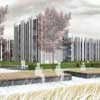
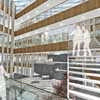
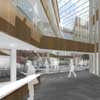
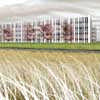
Serious Crime Campus Gartcosh pictures from the architect
The campus aims to bring together key law enforcement agencies including SCDEA, SPSA Forensic Services (Glasgow), COPFS, SOCA and HMRC, under one roof to allow more effective collaboration in purpose built facilities.
It is hoped that the enhanced profile and remit of the unit, in tandem with new powers contained within the Criminal Justice and Licensing bill, will help tackle the threat posed by organised crime.
Justice Secretary Kenny MacAskill said: “The new offence of directing serious organised crime is aimed at making it easier to convict those who direct crime but distance themselves from the activity on a day to day basis.
“By targeting those people who direct crime, or those, who chose to turn a blind eye to it, and monitoring these crooks financial affairs, we are putting them on notice that this Government, working with the other members of the Serious Organised Crime Taskforce is determined to take them on and take them down.”
The Scottish Government expects the campus to be operational by late 2011.
Scottish Crime Campus Gartcosh images / information from Gordon Murray and Alan Dunlop Architects
gm+ad architects
Previously:
Serious Crime Campus Building Design
In an innovative collaboration, bmj architects & gm+ad architects, as part of a multi-disciplinary design team, have now been appointed as Architects by the Scottish Government for a new Multi Agency Serious Crime Campus at Gartcosh. A state-of-the-art facility to promote collaboration and innovation across services, the Campus will comprise Offices, Forensic Laboratories and Support buildings.
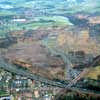
Serious Crime Campus site photo from architect
The Design Team, led by bmj with gm+ad as design champion, also comprises ARUP as Structural, Fire & Security Engineers, Wallace Whittle as Infrastructure/Environment Engineer, and Ian White Associates as Landscape Architects. Separate appointments have been made with T&A as Cost Consultants and Heery International Limited as Construction Co-ordinators.Cyril Sweett have been working on the project since January 2007 and are appointed as project managers and employers agent. It is proposed that the project, which is unique in the UK, will start on site early 2010.
Serious Crime Campus Gartcosh images / information from gm+ad architects
Architecture in Glasgow
Contemporary Glasgow Property Designs – recent architectural selection below:
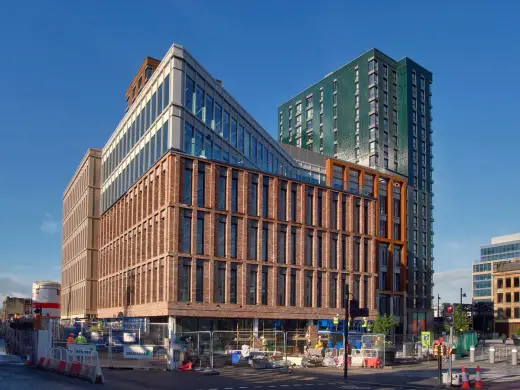
photo courtesy of Drum Property Group
Buchanan Wharf Glasgow Office Development
The Foundry Cathcart housing development
Comments / photos for the Scottish Crime Campus Gartcosh Building near Glasgow page welcome.
